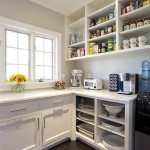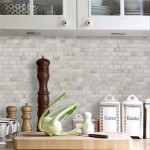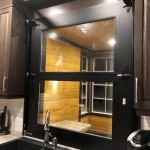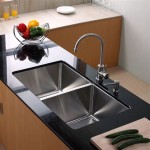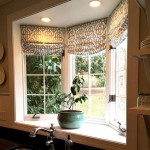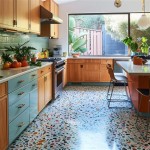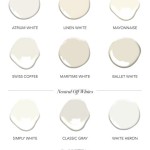Kitchen Island With Waterfall Countertop: A Statement of Design and Function
The kitchen island has evolved from a simple workspace to a central hub in contemporary homes. It serves as a gathering place, a preparation area, a dining surface, and often a focal point of aesthetic design. One particularly striking variation is the kitchen island with a waterfall countertop, where the countertop material seamlessly extends vertically down the sides of the island, creating a "waterfall" effect. This design element offers a sophisticated look while also presenting practical advantages. This article explores the design considerations, material options, functional benefits, and installation nuances of kitchen islands featuring waterfall countertops.
The waterfall countertop design is characterized by the continuous flow of the countertop material from the horizontal surface to the floor. This unbroken visual line necessitates careful planning during the design phase. Unlike traditional countertops that terminate with an edge or overhang, the waterfall edge requires precise measurements and fabrication to ensure a seamless and aesthetically pleasing transition. The visual impact is substantial, lending a sense of luxury and modernity. The design works particularly well in open-plan living spaces, where the island acts as a visual divider between the kitchen and living areas.
Design Considerations for Waterfall Countertops
The design of a kitchen island with a waterfall countertop requires meticulous attention to detail. The size and shape of the island are crucial factors. A larger island provides more surface area for both the countertop and the waterfall edges, maximizing the visual impact. However, even smaller islands can benefit from a waterfall design, provided the proportions are carefully considered. The height of the island is another important factor, influencing the ergonomics of food preparation and dining. Standard island heights typically range from 36 to 42 inches, but adjustments may be necessary based on the user's preferences and the intended functions of the island.
Cabinetry design beneath the waterfall countertop must also be carefully planned. The waterfall edge will partially obscure the cabinetry, influencing the placement of drawers and doors. Recessed handles or push-to-open mechanisms can maintain a clean, minimalist aesthetic. The style of the cabinetry should complement the countertop material and the overall kitchen design. For example, a sleek, modern kitchen might feature slab-front cabinets in a neutral color, while a more traditional kitchen might incorporate raised-panel doors and decorative hardware. The color and finish of the cabinetry should harmonize with the countertop to create a cohesive and visually appealing look.
Lighting plays a significant role in enhancing the visual appeal of a waterfall countertop. Under-cabinet lighting can illuminate the waterfall edges, highlighting the countertop material and creating a soft, ambient glow. Pendant lights suspended above the island can provide task lighting for food preparation and dining, while also adding a decorative element. The type of lighting chosen should complement the style of the kitchen and the overall design scheme. The color temperature of the lighting can also influence the mood and atmosphere of the space. Warm lighting can create a cozy and inviting atmosphere, while cool lighting can provide a more modern and energetic feel.
Lastly, consider the overall flow of the kitchen. The island should be positioned to facilitate easy movement between the key work zones: the sink, the refrigerator, and the cooktop. The waterfall countertop should not obstruct pathways or create bottlenecks. Ample space should be provided around the island for comfortable navigation. Additionally, consider the proximity of the island to seating areas. The overhang for seating should be adequate for comfortable legroom. Proper planning ensures that the kitchen island with a waterfall countertop not only looks stunning but also functions efficiently within the overall kitchen design.
Material Options for Waterfall Countertops
The choice of countertop material is a pivotal decision in the creation of a kitchen island with a waterfall countertop. Several materials lend themselves particularly well to this design, each offering distinct aesthetic and performance characteristics. Some of the most popular options include natural stone, engineered quartz, solid surface materials, and even wood.
Natural stone options, such as granite and marble, offer unparalleled beauty and durability. Granite is known for its strength and resistance to heat and scratches, making it an excellent choice for high-traffic kitchens. Marble, with its elegant veining and luxurious appearance, adds a touch of sophistication. However, marble is more porous than granite and requires sealing to prevent staining. Both granite and marble are available in a wide range of colors and patterns, allowing for customization to suit any design aesthetic. The natural variations in these materials contribute to their unique character.
Engineered quartz is a man-made material composed of quartz crystals and resin. It offers the look of natural stone but with enhanced durability and consistency. Quartz is non-porous, making it resistant to staining and bacteria. It is also available in a wider range of colors and patterns than natural stone, including solid colors and designs that mimic the appearance of marble or granite. Quartz is a low-maintenance option that requires minimal sealing. Its consistent appearance makes it ideal for achieving a seamless waterfall edge.
Solid surface materials, such as Corian, are another popular choice for waterfall countertops. These materials are seamless, non-porous, and can be molded into various shapes and designs. Solid surface materials are available in a wide range of colors and textures, allowing for creative design possibilities. They are also relatively easy to repair if damaged. The seamless nature of solid surface materials makes them particularly well-suited for waterfall edges, eliminating visible seams and creating a smooth, continuous surface.
Wood countertops can also be used to create a striking waterfall effect. Wood adds warmth and character to the kitchen, creating a rustic or farmhouse-inspired aesthetic. However, wood countertops require more maintenance than other materials. They need to be regularly oiled or sealed to prevent water damage and staining. The type of wood chosen should be durable and resistant to moisture. Butcher block countertops are a popular choice for kitchen islands, as they are both functional and visually appealing. The end grain of butcher block provides a durable and forgiving surface for food preparation. The natural grain patterns of wood add visual interest to the waterfall edges.
Ultimately, the choice of countertop material depends on individual preferences, budget considerations, and the overall design aesthetic of the kitchen. Each material offers unique advantages and disadvantages, and careful consideration should be given to ensure that the chosen material meets the specific needs of the homeowner. The material must be not only visually appealing, but also functional and durable enough to withstand the rigors of daily use.
Functional Benefits of Waterfall Countertops
Beyond their aesthetic appeal, waterfall countertops offer several functional benefits that enhance the usability and practicality of a kitchen island. These benefits include added protection, increased durability, and improved accessibility. The extended sides of the waterfall edge act as a barrier, protecting the cabinetry from spills, bumps, and other potential damage.
The waterfall edge provides an extra layer of protection for the cabinetry beneath the island. In a busy kitchen, spills and splashes are inevitable. The waterfall countertop prevents liquids from seeping into the cabinetry, which can cause damage and lead to mold growth. The extended sides also protect the cabinetry from accidental bumps and scrapes, preserving its pristine condition. This is particularly important in kitchens with young children or pets, where accidental damage is more likely to occur. The added protection offered by a waterfall countertop can extend the lifespan of the cabinetry and reduce the need for costly repairs.
The inherent durability of the countertop material contributes to the overall longevity of the kitchen island. Materials like granite, quartz, and solid surface are resistant to scratches, heat, and stains, making them ideal for high-traffic kitchens. The seamless design of the waterfall edge eliminates weak points where damage could occur. The continuous surface is less likely to chip or crack than traditional countertops with exposed edges. This increased durability translates to a longer lifespan for the kitchen island and reduces the need for frequent replacements. Investing in a durable countertop material is a wise decision that can save money in the long run.
Accessibility is also enhanced with a waterfall countertop design. The extended sides can provide a comfortable knee space for seating, making the island more accessible for dining or working. The smooth, continuous surface is easy to clean and maintain, promoting a hygienic environment. The waterfall edge can also serve as a visual cue, defining the boundaries of the island and improving navigation within the kitchen. For individuals with mobility issues, the added knee space can make it easier to access the island for meal preparation or other tasks. The improved accessibility of a kitchen island with a waterfall countertop can enhance the overall usability and functionality of the kitchen.
In essence, the functional benefits of a waterfall countertop extend beyond mere aesthetics. The added protection, increased durability, and improved accessibility contribute to a more practical and user-friendly kitchen environment. These benefits make the waterfall countertop a worthwhile investment for homeowners seeking to enhance both the style and functionality of their kitchen islands.
:max_bytes(150000):strip_icc()/19ModernkitchenwithwhitewaterfalledgedcountertopsnaturalwoodbarstoolsanddarkcabinetsinBenjaminMooresCheatingHeart-5c841158c9e77c0001a67647.jpeg?strip=all)
24 Kitchens With Waterfall Countertops
:max_bytes(150000):strip_icc()/KCI_SuffolkRd_9-1-5c840ff246e0fb0001431995.jpg?strip=all)
24 Kitchens With Waterfall Countertops

7 Waterfall Kitchen Island Counters

Kitchen Islands With Waterfall Ends J Aaron

Waterfall Countertop Ends Are They Right For Your Kitchen Island

12 Waterfall Kitchen Island Ideas For A Streamlined Modern Look

Waterfall Countertops In 2024 Buying Guide Marble Com

What Are Waterfall Countertops Understanding The Popular Kitchen Trend Decorilla Online Interior Design

Is A Waterfall Island Right For Your Kitchen Caesarstone Us

5 Reasons To Have Waterfall Countertops In Your Kitchen
See Also

